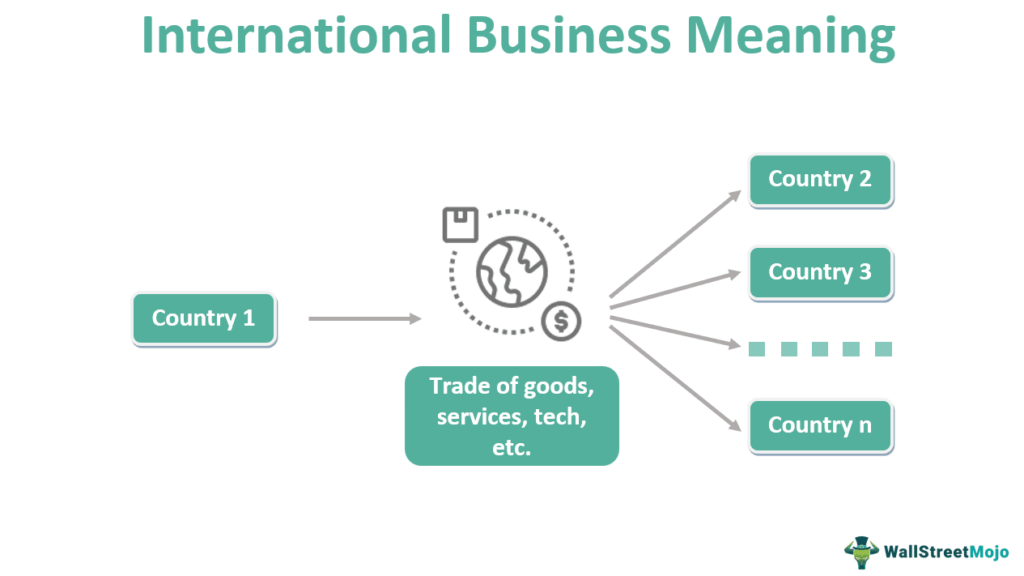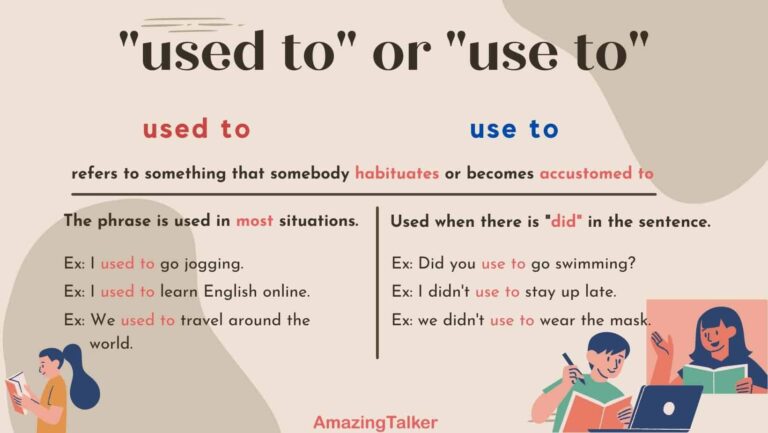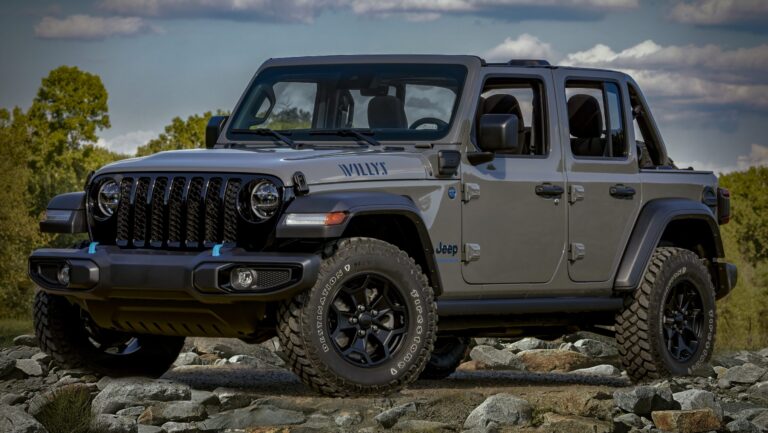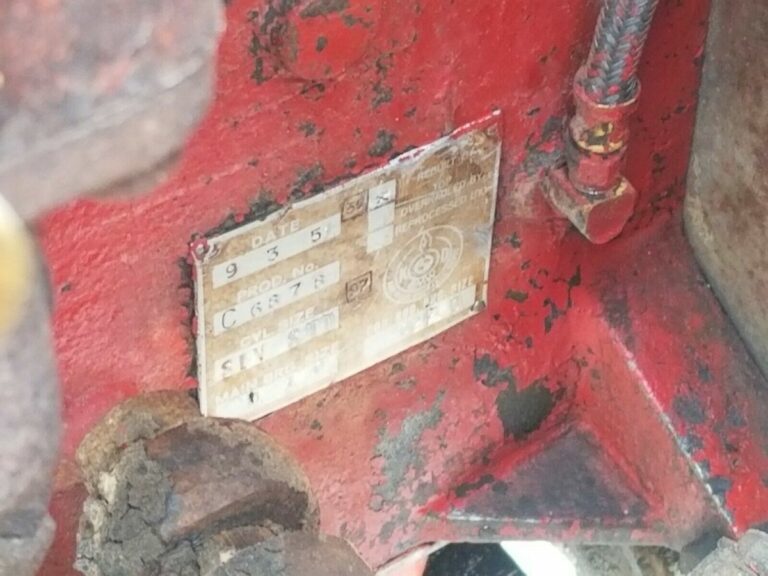International Jeep Scout For Sale: Your Ultimate Guide to Finding Your Classic Off-Road Companion
International Jeep Scout For Sale: Your Ultimate Guide to Finding Your Classic Off-Road Companion jeeps.truckstrend.com
The allure of classic utility vehicles continues to captivate enthusiasts, and few models embody the spirit of rugged adventure quite like the International Harvester Scout. Often mistakenly referred to as the "International Jeep Scout" due to its direct competition with the venerable Jeep CJ series and its similar go-anywhere capabilities, the Scout carved out its own formidable legacy as a pioneer in the sport utility vehicle market. For those seeking a distinctive, capable, and character-filled classic 4×4, an International Harvester Scout for sale represents an exciting prospect. This comprehensive guide will delve into everything you need to know about finding, evaluating, and ultimately owning one of these iconic machines.
Born from the drawing boards of International Harvester, a company renowned for its agricultural machinery and heavy trucks, the Scout was introduced in 1961, predating the Ford Bronco and Chevrolet Blazer. It offered a versatile platform that could be configured as a pickup, a convertible, or a station wagon, making it one of the earliest examples of a true multi-purpose SUV. Today, the demand for these vintage workhorses is strong, driven by their robust construction, distinctive styling, and burgeoning aftermarket support. Whether you’re an off-road enthusiast, a classic car collector, or simply someone looking for a unique daily driver, understanding the nuances of the International Harvester Scout market is crucial.
International Jeep Scout For Sale: Your Ultimate Guide to Finding Your Classic Off-Road Companion
Understanding the International Harvester Scout Legacy (And Dispelling the "Jeep" Misconception)
Before diving into the specifics of finding one for sale, it’s essential to clarify the identity of this legendary vehicle. While it competed directly with Jeeps and shared a similar design philosophy, the "International Harvester Scout" is an entirely separate brand and lineage from the "Jeep" brand. The confusion likely stems from their shared market segment and the Scout’s "jeep-like" appearance and utility.
International Harvester (IH) first introduced the Scout 80 in 1961, a compact, two-door truck with a removable top and windshield, initially designed as a versatile vehicle for farmers and utility companies. It quickly gained popularity for its ruggedness and simplicity. This evolved into the Scout 800 series (1965-1971), which offered more comfort, engine options, and minor styling updates.
The most recognized and widely produced model is the Scout II (1971-1980). The Scout II was larger, more refined, and offered a wider array of options, including various V8 engines (304, 345, and the powerful 392 cubic inch V8), automatic transmissions, and power steering/brakes. Variants like the Scout II Traveler (a long-wheelbase version with more cargo space) and the Scout II Terra (a pickup truck variant) further diversified the lineup. Rare models like the SSII (Super Scout II), designed as an open-top off-road vehicle, and special editions like the Spirit of ’76 and Midas Edition, add to their collectible appeal. The Scout’s enduring legacy is a testament to IH’s engineering prowess and vision, creating a vehicle that was truly ahead of its time.
Why Buy an International Harvester Scout Today?
The reasons for purchasing a classic Scout extend beyond mere nostalgia. These vehicles offer a unique blend of attributes that appeal to a wide range of buyers:
- Classic Appeal & Potential Investment: Scouts possess an undeniable vintage charm. Their rugged, utilitarian design stands out in a sea of modern SUVs. Well-maintained and restored examples have shown a steady appreciation in value, making them a potential investment.
- Off-Road Prowess: At their core, Scouts were built for utility and off-road capability. With robust ladder frames, solid axles, and capable 4×4 systems, they remain formidable off-roaders, often outperforming many modern vehicles in challenging terrain.
- Customization Potential: The Scout’s simple, robust design makes it an ideal platform for customization. A thriving aftermarket provides parts for everything from lift kits and engine upgrades to modern amenities, allowing owners to tailor their Scout for specific uses, be it rock crawling, overlanding, or comfortable cruising.
- Community & Uniqueness: Owning a Scout means joining a passionate and supportive community. Unlike more common classic SUVs, a Scout commands attention and sparks conversations wherever it goes, offering a unique ownership experience.
- Durability & Simplicity: Built with heavy-duty components, Scouts are known for their durability. Their mechanical simplicity, compared to modern vehicles, often translates to easier diagnosis and repair for the mechanically inclined owner.


Navigating the Market: Where to Find an International Harvester Scout For Sale
Finding the right Scout requires patience and knowing where to look. The market is diverse, ranging from pristine restored examples to rough "project" vehicles.
- Online Marketplaces: Websites like eBay Motors, Craigslist, and Facebook Marketplace are common starting points. Be cautious, scrutinize photos, and always request more information.
- Dedicated Forums & Social Media Groups: Online communities like BinderPlanet.com or various Facebook groups dedicated to International Harvester Scouts are excellent resources. Owners often list vehicles for sale directly, and you can tap into collective knowledge for advice.
- Classic Car Dealers & Auctions: Reputable classic car dealerships occasionally stock Scouts, especially those specializing in vintage 4x4s. Auctions (both online and live, like Mecum or Barrett-Jackson) can offer a wide selection, but require quick decision-making and a thorough understanding of the vehicle’s condition.
- Specialized Scout Vendors: Companies like Super Scout Specialists or IH Parts America often have vehicles for sale or can connect you with sellers.
- Word-of-Mouth: Sometimes the best deals are found through local classifieds, car shows, or simply by spreading the word within the classic car community.

What to Look For: Key Inspection Points Before Buying
Buying a vintage vehicle, especially one as old as a Scout, requires a meticulous inspection. Be prepared to travel, or ideally, hire a pre-purchase inspection (PPI) specialist.
- Rust: This is the absolute biggest enemy of the Scout. Pay extremely close attention to:
- Frame: Inspect the entire frame for rot, especially around body mounts, spring hangers, and crossmembers.
- Body: Floorboards, rocker panels, rear quarter panels (behind the wheels), tailgate, fenders, and door bottoms are common rust traps.
- Windshield Frame & Cowl: These areas can trap water and rust from the inside out.
- Engine: Common IH engines include the 196ci I4, and the 266, 304, 345, and 392ci V8s. Check for:
- Oil leaks (especially from valve covers and rear main seal).
- Blue or white smoke from the exhaust (indicating oil burning or head gasket issues).
- Strange noises (knocks, rattles, ticks).
- Overall cleanliness – a sparkling clean engine bay might hide leaks.
- Transmission & Transfer Case:
- Manual transmissions: Check for smooth shifting, clutch engagement, and excessive gear noise.
- Automatic transmissions: Look for smooth shifts, fluid leaks, and proper engagement in all gears.
- Transfer case (usually Dana 20 or NP205): Engage 4×4 high and low; listen for grinding or clunking.
- Axles & Suspension: Inspect for fluid leaks from differential covers and axle seals. Check U-joints for play. Examine leaf springs for sagging or broken leaves. Look at steering components (tie rods, drag link) for wear.
- Interior: Check the condition of seats, dashboard, gauges, and door panels. Ensure all gauges work.
- Electrical System: Often a weak point due to aging wiring. Test all lights, wipers, heater/blower motor, radio, and power windows (if equipped).
- Documentation: Request the title (ensure it’s clear and matches the VIN), and any available service records or restoration receipts.
- Modifications: Assess the quality of any aftermarket modifications. Poorly installed lifts or engine swaps can lead to significant problems.
Understanding Scout Models and Their Value
The value of an International Harvester Scout varies dramatically based on its model, year, condition, and rarity.
- Scout 80/800 (Early Models, 1961-1971): Generally simpler, more utilitarian, and often command slightly lower prices than Scout IIs in comparable condition, though highly original or restored examples can fetch good money. Their raw, "jeep-like" aesthetic appeals to purists.
- Scout II (1971-1980): The most popular and common, offering a wider range of engines and amenities. These are generally the most sought-after and therefore command higher prices, especially for V8-powered, 4×4 models.
- Traveler/Terra: Long-wheelbase variants, offering more utility and cargo space. Their unique proportions are appealing to some, and they can be slightly less common than standard Scout IIs.
- SSII (Super Scout II): The rarest and most collectible of the production Scouts. With their open-top design, roll bar, and minimalist interior, they are highly desirable for off-road enthusiasts and collectors, often fetching premium prices.
- Condition Tiers:
- Project: Runs, but needs significant work (rust repair, mechanical overhaul, interior, paint). Often $5,000 – $15,000.
- Driver: Mechanically sound, minor cosmetic flaws, can be driven reliably. Often $15,000 – $30,000.
- Restored: Professionally restored, excellent condition, often better than new. Can range from $30,000 to well over $70,000, especially for rare models.
The Buying Process: Tips for a Smooth Transaction
Once you’ve found a potential Scout, here’s how to navigate the purchase:
- Set a Realistic Budget: Beyond the purchase price, factor in immediate repairs, deferred maintenance, potential restoration costs, shipping, insurance, and registration.
- Get a Pre-Purchase Inspection (PPI): If you’re not mechanically inclined or can’t inspect it yourself, hire a local mechanic specializing in classic vehicles or 4x4s to perform a thorough PPI. This small investment can save you thousands.
- Negotiate Wisely: Research market values for similar Scouts. Be prepared to walk away if the price doesn’t align with the vehicle’s condition. Highlight any flaws you found during inspection to justify a lower offer.
- Test Drive: Always test drive the vehicle. Pay attention to steering, braking, engine performance, transmission shifts, and any unusual noises. Test 4×4 engagement if possible.
- Verify Documentation: Ensure the seller has a clear, transferable title that matches the VIN on the vehicle. Get a bill of sale detailing the sale terms.
- Plan Transportation: For non-running projects or long-distance purchases, arrange for professional vehicle transport.
Owning and Maintaining Your Scout
Owning an International Harvester Scout is a rewarding experience, but it comes with the responsibilities of maintaining a vintage vehicle.
- Parts Availability: Despite being out of production for decades, parts availability is surprisingly good thanks to dedicated vendors (e.g., IH Parts America, Super Scout Specialists, Scout Light Line Distributors) who reproduce common components and salvage parts from donor vehicles.
- Common Issues: Be prepared for typical vintage vehicle quirks: rust (an ongoing battle), electrical gremlins (aging wiring harnesses), carburetor issues, and aging seals/gaskets leading to fluid leaks.
- Maintenance Schedule: Adhere to regular maintenance. Change fluids (engine oil, transmission, transfer case, differentials) religiously. Grease all fittings. Inspect belts, hoses, and brakes regularly.
- Upgrades: Many owners opt for modern upgrades to enhance reliability and performance, such as electronic fuel injection (EFI) conversions, disc brake conversions, power steering upgrades, and modern suspension components.
Practical Advice and Actionable Insights
- Don’t Rush: The perfect Scout won’t appear overnight. Take your time, research thoroughly, and don’t let emotion cloud your judgment.
- Join the Community: Before you even buy, join online forums and Facebook groups. Learn from experienced owners, ask questions, and build connections. The Scout community is incredibly helpful.
- Be Realistic: Understand that even a "restored" Scout may have minor issues. A project Scout will demand significant time, money, and mechanical aptitude.
- Prioritize a Solid Foundation: If possible, always buy the most rust-free body and frame you can afford. Mechanical issues are generally easier and less expensive to fix than extensive rust repair.
- Consider Your Use Case: Are you building an extreme off-roader, a show queen, or a weekend cruiser? Your intended use will dictate which model and condition level is best for you.
Conclusion
The International Harvester Scout, though often mistakenly lumped under the "International Jeep Scout" moniker, stands proudly as a true American classic in its own right. Its rugged charm, undeniable off-road prowess, and robust engineering have cemented its place in automotive history. For enthusiasts, the pursuit of an International Harvester Scout for sale is more than just a transaction; it’s an entry into a passionate community and an opportunity to own a piece of pioneering SUV heritage. With careful research, a thorough inspection, and a realistic understanding of the commitment involved, finding and restoring your dream Scout can be one of the most rewarding automotive adventures you’ll ever embark upon. So, start your search, embrace the journey, and prepare to turn heads in your iconic, go-anywhere International Harvester Scout.
International Harvester Scout Estimated Price Guide
Please note: Prices are highly variable based on condition, mileage, modifications, engine, location, and market demand. This table provides a general estimate.
| Model / Variant | Year Range | Condition: Project (Needs Major Work) | Condition: Driver (Good Running Order) | Condition: Restored (Excellent/Show Quality) | Key Characteristics |
|---|---|---|---|---|---|
| Scout 80 | 1961-1965 | $5,000 – $12,000 | $12,000 – $25,000 | $25,000 – $45,000+ | Basic, utilitarian, removable top & windshield. |
| Scout 800 | 1965-1971 | $6,000 – $15,000 | $15,000 – $28,000 | $28,000 – $50,000+ | More refined than 80, wider engine options. |
| Scout II | 1971-1980 | $7,000 – $18,000 | $18,000 – $35,000 | $35,000 – $65,000+ | Most common, larger, more comfortable. |
| Scout II Traveler | 1976-1980 | $8,000 – $20,000 | $20,000 – $40,000 | $40,000 – $70,000+ | Long-wheelbase SUV, increased cargo space. |
| Scout II Terra | 1976-1980 | $7,000 – $18,000 | $18,000 – $35,000 | $35,000 – $65,000+ | Pickup truck variant of the Scout II. |
| SSII (Super Scout II) | 1976-1979 | $15,000 – $30,000 | $30,000 – $55,000 | $55,000 – $90,000+ | Rare, open-top, off-road focused, highly collectible. |
| Special Editions | Varies | Consult Market | Consult Market | $60,000 – $100,000+ | Spirit of ’76, Midas, etc. (rarity adds value). |
Disclaimer: These are rough estimates. A meticulously maintained, low-mileage original example in excellent condition, or one with desirable factory options/rare features, could command prices significantly higher than the top end of these ranges. Conversely, a heavily rusted or non-running vehicle could be purchased for less.
Frequently Asked Questions (FAQ) about International Harvester Scouts
Q1: Is an International Harvester Scout truly a "Jeep" Scout?
A1: No, absolutely not. This is a common misconception. The "Jeep" brand belongs to Stellantis (formerly Chrysler/FCA), while the "Scout" was produced by International Harvester. They were direct competitors in the nascent SUV market, but entirely separate companies and vehicle lines. The confusion likely stems from their similar rugged, open-top utility and their competition for the same customer base.
Q2: Are parts hard to find for International Harvester Scouts?
A2: Surprisingly, no. While you won’t find parts at every auto parts store, there’s a robust and active aftermarket. Several dedicated vendors (e.g., IH Parts America, Super Scout Specialists, Scout Light Line Distributors) specialize in new old stock (NOS), reproduction, and used parts. The strong owner community also helps with sourcing.
Q3: How reliable are International Harvester Scouts?
A3: When properly maintained, Scouts are quite reliable for a vintage vehicle. Their mechanical simplicity means fewer complex systems to break down. However, like any vehicle over 40 years old, they require consistent maintenance and attention. Common issues like rust, aging electrical systems, and carburetor quirks are manageable but need addressing. Many owners upgrade to modern components (like EFI) for improved daily reliability.
Q4: Can an International Harvester Scout be a daily driver?
A4: Yes, many Scouts are daily driven, especially those that have undergone restoration or significant upgrades. However, be aware that they lack modern amenities like airbags, ABS, and advanced climate control. Fuel economy is generally poor (single-digit to low-teens MPG), and they can be louder and less comfortable than modern vehicles. For a true daily driver, consider investing in upgrades like power steering, power brakes, and a good sound system.
Q5: What’s the fuel economy like for a Scout?
A5: Don’t expect good fuel economy. Depending on the engine (especially the V8s), transmission, gearing, and tire size, most Scouts get between 8-14 miles per gallon (MPG). The larger V8s and vehicles with oversized tires or lower gearing will be on the lower end of that spectrum.
Q6: Which is the "best" International Harvester Scout model to buy?
A6: There’s no single "best" model; it depends on your preferences and budget.
- Scout 80/800: For a more raw, classic "jeep-like" experience and simpler mechanics.
- Scout II: Most popular, offers more comfort, power, and parts availability. A great all-rounder.
- Scout II Traveler/Terra: If you need more cargo space or a classic pickup utility.
- SSII: If you’re a collector seeking rarity and the ultimate open-top off-road experience, and have a larger budget.
Generally, prioritize condition (especially rust-free) over specific model year if you’re looking for a solid driver.
Q7: What’s the average cost of a full restoration for an International Harvester Scout?
A7: A full, professional, body-off restoration can easily cost anywhere from $40,000 to $80,000 or even more, depending on the initial condition of the vehicle, the level of detail, and labor rates. This is why buying a vehicle that’s already in "driver" or "restored" condition can sometimes be more cost-effective than taking on a major project yourself, unless you have the skills, time, and tools to do much of the work.




